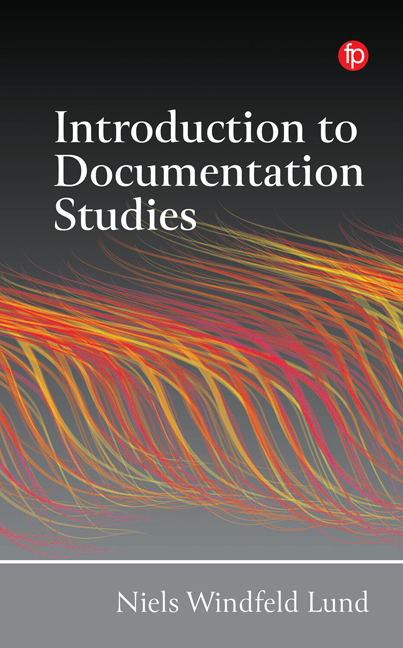 Introduction to Documentation Studies
Introduction to Documentation Studies 8 - Politics: The March on Washington for Jobs and Freedom, August 28, 1963
Published online by Cambridge University Press: 28 March 2024
Summary
Introduction
When Mozart composed his Requiem, a score was created. When Hemingway wrote his short story, a written story was created. When Munch painted his paintings, he made a painting to be exhibited in galleries. When Kjærgaard wrote his dissertation, a monograph was created to be read and defended in the scientific community. All those documents can be stored and preserved in a library, museum, or archive.
A march cannot be stored in a library, nor in a museum or archive. Nevertheless, it is also a document. In fact, every single moment in all persons’ lives is, in principle, a document demonstrating by means of the human body the life of the person, even though it is not stored outside the human body.
Some moments are more planned and formalized, following a tradition or rules, and become rites shared by many people. We know these kinds of moments from everyday life like the daily meals of breakfast, lunch, and dinner. We have meetings that follow a standard procedure. In religious life we have many rites, from the ordinary church services to different kinds of masses. In political life we also have many kinds of rites, both within the formal governmental framework and outside, in political movements.
All these rites are live documents. They are physically created by human bodies. They are organized by a human social organization and they are conceived as an important configuration for the people involved.
The March on Washington for Jobs and Freedom, August 28, 1963, was such a political rite and, as such, a live document. It was created by a group of active people and embodied by thousands of people who took part. It also had an impact on political life and has been remembered by not only its participants, but in the world in general, and it has been an object for discussion and research. In this chapter I will investigate how this live document was created and how it has been an important live document in society afterwards.
March
Throughout human history there have been marches, gathering people together to celebrate someone or something and to show power. Those in power in society have used marches, processions, or parades to show people their power, to demonstrate their power to represent their power, to prove their power.
- Type
- Chapter
- Information
- Introduction to Documentation StudiesComplementary Studies of Documentation, Communication and Information, pp. 105 - 118Publisher: FacetPrint publication year: 2024
